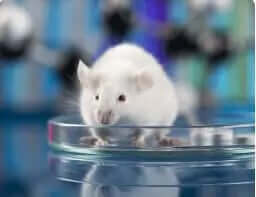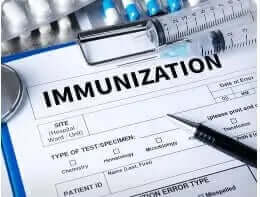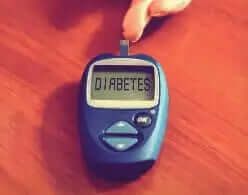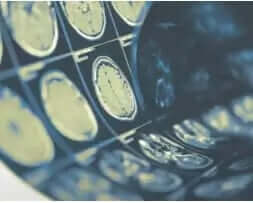Resveratrol: The Complete Guide to Nature's Most Powerful Antioxidant
Resveratrol has captured the attention of scientists worldwide as one of nature's most promising compounds for human health. This powerful polyphenol, found naturally in red grapes, berries, and certain plants, offers remarkable potential for supporting cardiovascular health, promoting longevity, and protecting against various diseases. Recent groundbreaking research published in the prestigious Annals of the New York Academy of Sciences has unveiled exciting new discoveries about how resveratrol works in our bodies and why it may revolutionize preventive health care.
What Makes Resveratrol So Special?
The scientific community has recognized resveratrol as a compound with extraordinary versatility. Unlike many supplements that target just one aspect of health, resveratrol influences multiple biological pathways simultaneously. This unique characteristic explains why researchers from diverse fields including cardiology, oncology, and anti-aging medicine have all focused their attention on understanding this remarkable molecule.
When you consume resveratrol, whether through food sources or supplements, it begins working at the cellular level to activate protective mechanisms that have evolved over millions of years. These mechanisms help your cells respond better to stress, repair damage more efficiently, and maintain optimal function as you age.
Revolutionary Cancer Prevention Properties of Resveratrol
One of the most exciting areas of resveratrol research involves its potential role in cancer prevention. Leading scientists have documented how this compound activates apoptosis, the body's natural process for eliminating damaged or potentially dangerous cells. This mechanism serves as a powerful defense against cancer development.
Research shows that resveratrol targets multiple pathways involved in cancer formation and progression. It helps prevent the initial damage to DNA that can trigger cancerous changes, blocks the growth of abnormal cells, and even helps the immune system recognize and eliminate potential threats more effectively.
What truly excites researchers is resveratrol's ability to selectively target cancer cells while leaving healthy cells unharmed. This selectivity represents a major advantage over traditional treatments and has led experts to conclude that resveratrol holds tremendous potential as an efficient anticancer drug of the future.
Key Cancer-Fighting Mechanisms
- Enhanced apoptosis in abnormal cells
- Protection of DNA from oxidative damage
- Inhibition of tumor blood vessel formation
- Activation of tumor suppressor genes
- Reduction of inflammation that promotes cancer growth
Understanding Resveratrol Bioavailability and Optimal Dosing
For resveratrol to deliver its remarkable benefits, your body must be able to absorb and utilize it effectively. Scientists have conducted extensive research on bioavailability, studying how different forms and doses of resveratrol perform in the human body.
Clinical studies have revealed fascinating insights about optimal dosing strategies. Research supports that consuming 450 mg per day provides measurable benefits while maintaining excellent safety. This dosage allows for sufficient absorption to achieve therapeutic levels in various tissues throughout the body.
The metabolism of resveratrol involves several pathways that work together to distribute this compound where it's needed most. Your liver processes resveratrol into various metabolites, each with unique properties that contribute to overall health benefits. Understanding these metabolic processes has helped researchers develop more effective delivery methods and formulations.
Factors That Enhance Resveratrol Absorption
- Taking resveratrol with healthy fats improves absorption
- Consuming it with other polyphenols creates synergistic effects
- Timing doses with meals optimizes bioavailability
- Choosing high-quality, pure formulations ensures maximum benefit
- Maintaining consistent daily intake builds therapeutic levels
Cardioprotective Benefits: How Resveratrol Supports Heart Health
Cardiovascular disease remains the leading cause of death in Western societies, making the cardioprotective properties of resveratrol particularly significant. This compound offers multiple mechanisms for supporting heart health, from improving blood vessel function to reducing inflammation.
Resveratrol specifically targets proteins like NQO2 that play crucial roles in protecting cardiac tissue from damage. By enhancing the activity of these protective proteins, resveratrol helps maintain healthy heart function even under stress. This molecular-level protection translates into real-world benefits including better blood pressure regulation, improved cholesterol profiles, and reduced risk of heart attacks.
The vascular system as a whole benefits tremendously from resveratrol supplementation. Blood vessels maintain their elasticity better, circulation improves, and the dangerous buildup of plaque slows significantly. These effects become especially important as we age, when vascular health naturally tends to decline.
Comprehensive Cardiovascular Support
- Improved endothelial function for better blood flow
- Reduced oxidative stress in blood vessels
- Lower inflammation markers associated with heart disease
- Enhanced nitric oxide production for vessel dilation
- Protection against atherosclerosis development
Anti-Inflammatory Properties and Vascular Aging
Chronic inflammation accelerates aging throughout the body, but particularly in the vascular system. Resveratrol's powerful anti-inflammatory properties offer a natural solution for maintaining youthful blood vessel function well into later years.
Research demonstrates that resveratrol reduces key inflammatory markers that contribute to vascular aging. By keeping inflammation under control, blood vessels remain more flexible, responsive, and resistant to damage. This protection extends beyond just the cardiovascular system, benefiting organs and tissues throughout the body that depend on healthy circulation.
The elderly population stands to gain exceptional benefits from resveratrol's vascular protection. Studies show that regular supplementation can help reverse some age-related changes in blood vessel function, effectively turning back the clock on vascular aging.
Additional Health Benefits of Resveratrol
Beyond cancer prevention and cardiovascular protection, resveratrol offers an impressive array of additional health benefits that continue to amaze researchers.
Brain Health and Cognitive Function
Resveratrol crosses the blood-brain barrier, providing direct neuroprotective effects. It helps maintain cognitive function, supports memory, and may reduce the risk of neurodegenerative diseases. Studies show improved brain blood flow and enhanced neural plasticity with regular resveratrol supplementation.
Metabolic Health and Weight Management
This compound activates similar pathways to caloric restriction, promoting healthy metabolism without requiring dramatic dietary changes. Resveratrol supports healthy blood sugar levels, improves insulin sensitivity, and may help with weight management by enhancing fat metabolism.
Anti-Aging and Longevity
Perhaps most exciting is resveratrol's potential to extend healthy lifespan. By activating sirtuins, proteins associated with longevity, resveratrol mimics the life-extending effects of caloric restriction. This activation promotes cellular repair, enhances stress resistance, and supports overall vitality.
How to Maximize Your Resveratrol Benefits
To harness the full potential of resveratrol, consider these evidence-based strategies for optimization:
- Choose Quality Sources: Select supplements from reputable manufacturers that provide pure, bioavailable resveratrol.
- Maintain Consistency: Daily supplementation builds and maintains therapeutic levels in your body.
- Combine with Lifestyle Factors: Resveratrol works best alongside healthy diet, regular exercise, and stress management.
- Monitor Your Response: Pay attention to improvements in energy, cardiovascular markers, and overall wellbeing.
- Stay Informed: Keep up with emerging research to optimize your supplementation strategy.
Safety and Considerations
Resveratrol demonstrates an excellent safety profile in clinical studies. Most people tolerate it well, even at higher doses. However, as with any supplement, certain considerations apply:
- Consult healthcare providers if taking blood-thinning medications
- Start with lower doses to assess individual response
- Choose pharmaceutical-grade supplements for purity
- Store supplements properly to maintain potency
- Consider timing around meals for optimal absorption
The Future of Resveratrol Research
Scientists continue uncovering new applications for resveratrol, with ongoing studies exploring its potential in areas like autoimmune conditions, skin health, and athletic performance. The development of enhanced formulations and delivery methods promises to make resveratrol even more effective in the coming years.
Research into resveratrol analogs shows promise for creating compounds with improved bioavailability while maintaining the beneficial effects of natural resveratrol. These advances may soon deliver even more powerful tools for supporting human health and longevity.
Making Resveratrol Part of Your Health Strategy
Incorporating resveratrol into your daily routine represents a proactive step toward optimal health. Whether your goals include cardiovascular protection, cancer prevention, or healthy aging, resveratrol offers scientifically validated support for achieving these objectives.
The convergence of traditional wisdom about plant compounds and modern scientific validation makes resveratrol one of the most promising natural supplements available today. As research continues revealing new benefits and applications, those who begin supplementation now position themselves at the forefront of preventive health care.
Frequently Asked Questions About Resveratrol
What is the recommended daily dose of resveratrol?
Clinical research supports a daily dose of 450 mg for optimal benefits. This dosage provides sufficient bioavailability to achieve therapeutic effects while maintaining an excellent safety profile. Some individuals may benefit from starting with a lower dose and gradually increasing to assess their response.
How long does it take to see benefits from resveratrol supplementation?
Many people report increased energy and improved wellbeing within 2-4 weeks of starting resveratrol. However, the most significant benefits, particularly for cardiovascular health and cellular protection, develop over several months of consistent use. Long-term supplementation provides cumulative benefits that continue to compound over time.
Can I get enough resveratrol from food sources alone?
While foods like red grapes, blueberries, and peanuts contain resveratrol, the amounts are relatively small. You would need to consume impractical quantities of these foods daily to achieve therapeutic doses. Supplementation provides a concentrated, consistent source that delivers clinically relevant amounts of resveratrol.
Is resveratrol safe for long-term use?
Extensive research demonstrates that resveratrol is safe for long-term supplementation. Studies lasting several years show no adverse effects at recommended doses. In fact, the benefits of resveratrol tend to increase with continued use, making it an ideal supplement for lifelong health optimization.
How does resveratrol compare to other antioxidants?
Resveratrol stands out among antioxidants due to its unique ability to activate multiple protective pathways simultaneously. While other antioxidants primarily neutralize free radicals, resveratrol also activates longevity genes, supports cellular repair mechanisms, and provides targeted protection for specific organs. This multifaceted action makes it exceptionally valuable for comprehensive health support.
Can resveratrol help with weight management?
Research shows that resveratrol activates metabolic pathways similar to those triggered by caloric restriction. It enhances fat metabolism, improves insulin sensitivity, and supports healthy blood sugar regulation. While not a weight loss miracle, resveratrol can be a valuable component of a comprehensive approach to achieving and maintaining a healthy weight.
What should I look for when choosing a resveratrol supplement?
Quality matters significantly with resveratrol supplements. Look for products that specify trans-resveratrol content, as this is the bioactive form. Choose supplements from manufacturers who provide third-party testing results, use pharmaceutical-grade ingredients, and offer clear information about sourcing and purity. Avoid products with unnecessary fillers or artificial additives.
Can resveratrol interact with medications?
While resveratrol is generally safe, it may interact with certain medications, particularly blood thinners and NSAIDs. Its mild blood-thinning properties could enhance the effects of anticoagulant medications. Always consult with healthcare providers before starting resveratrol if you take prescription medications, especially those affecting blood clotting or liver metabolism.
Does resveratrol really slow aging?
Scientific evidence strongly supports resveratrol's anti-aging properties. It activates sirtuins, the same longevity proteins triggered by caloric restriction. Studies show that resveratrol helps maintain telomere length, reduces cellular senescence, and protects against age-related diseases. While it won't stop aging entirely, resveratrol can significantly slow the aging process and help maintain youthful function longer.
What time of day should I take resveratrol?
For optimal absorption, take resveratrol with a meal containing some healthy fats. Many people prefer morning supplementation to align with their body's natural circadian rhythms. However, the most important factor is consistency. Choose a time that works with your schedule and stick to it daily for best results.
Resveratrol represents a remarkable convergence of nature's wisdom and modern science. As research continues unveiling its numerous benefits, from cancer prevention to cardiovascular protection and healthy aging, this powerful compound offers hope for a healthier, more vibrant future. By understanding how to optimize resveratrol supplementation and making it part of a comprehensive health strategy, you can harness its full potential for transforming your wellbeing.







